The Nordics (and accordingly, the Scandinavian countries) are a land of contrasts; an inconvenient but balanced blend of light and darkness. Here, the sun’s warm touch lingers through gorgeous summer days, only to retreat into the reflective embrace of winter’s cold and seemingly endless nights. Here, ancient traditions exist comfortably alongside forward-thinking innovation, and a deep reverence for nature’s power is matched by the energy of an ambitious people.
As someone who has lived within this captivating duality, who has witnessed both its magic and deep-rooted challenges from my childhood streets to far-flung corners of the globe, I invite you to explore this complexity with me. This guide won’t avoid the nuances or simplify the contradictions. Instead, we’ll delve into the heart of it all, revealing the authentic Nordics – a region that is both strikingly beautiful and deeply human.
Look, I’m not going to tell you that the Nordic region and the Scandinavian countries are perfect, because they are definitely not. The winters are loooong, the prices eye-watering, and sometimes the reserved nature of the locals can take a lot of getting used to. But as a Swede who’s seen a fair bit of the world and its people, I can also tell you that the things that make this region special—the stunning natural beauty, the focus on quality of life, the quirky cultural traditions—far outweigh the downsides.
This guide is about giving you the honest truth about Sweden, Denmark, and Norway (a.k.a. Scandinavia) along with Finland, Iceland, Faroe Islands, Åland, and Greenland — collectively; the Nordic region.
I’ll share the insider tips I’ve picked up from a lifetime of living in and exploring these countries, from navigating the cities to venturing into the wild. I’ll also give you a taste of what it’s like to live here, from the joys of fika to the challenges of Jantelagen (don’t worry, I’ll explain). Think of me as your friendly local northerner, who has also traveled the world to give you the best, and most balanced, guide to the Nordics out there. Let’s dive in!
ℹ️ You’ll get to know the Nordics in this guide with help from data-driven insights and my personal experiences from having grown up here and traveled around the region my entire life. To paint a more vivid picture of the places and people, I’ve also included lots of photos from my own life and travels. Lastly, I’m including plenty of links to further reading throughout this article if you’d like to dig deeper.
Where is Scandinavia and the Nordics?
A Map of Scandinavia and the Nordics



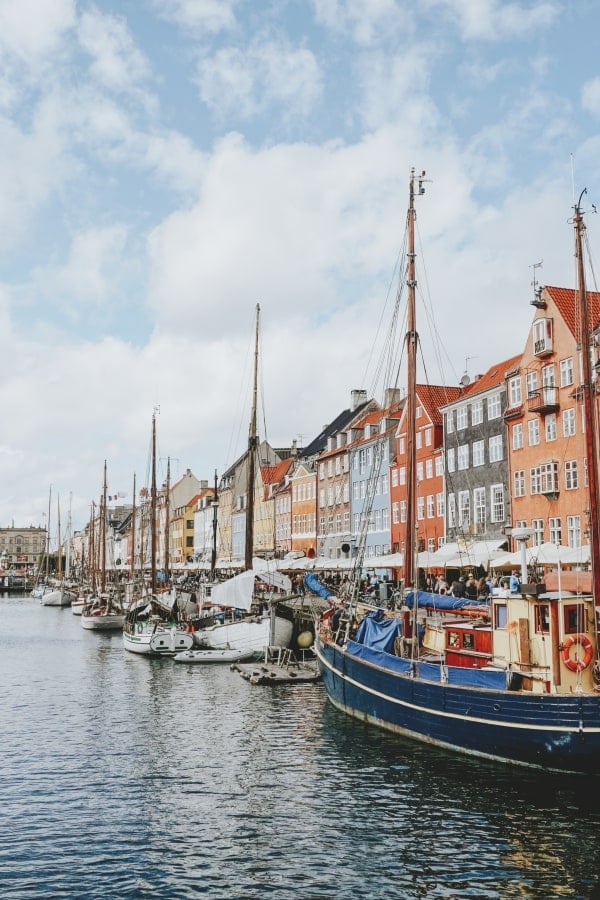
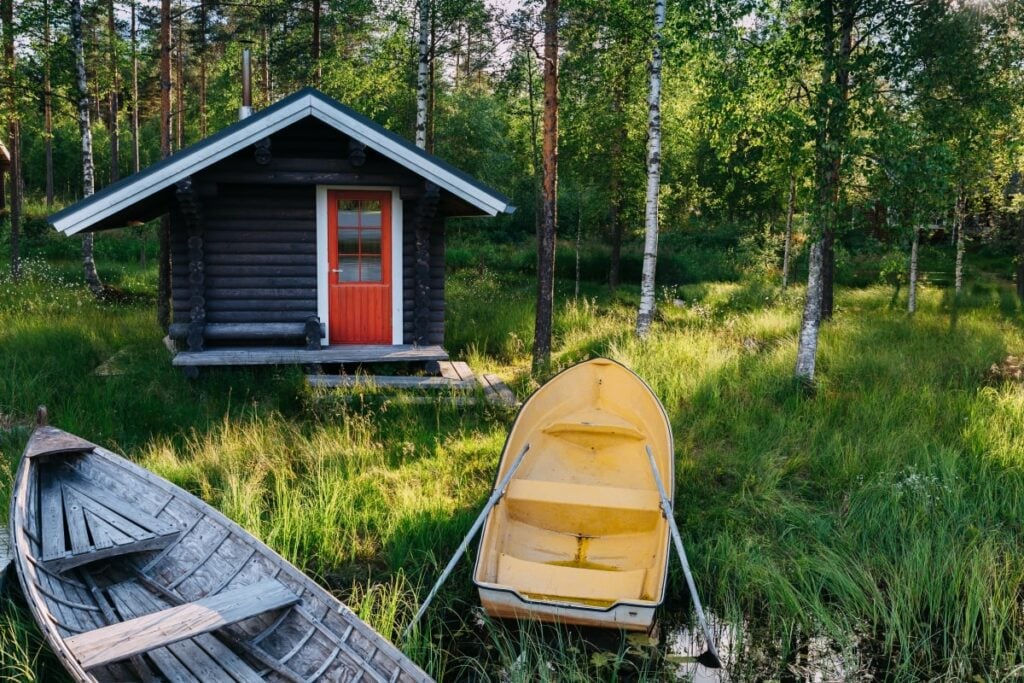


Scandinavia & the Nordic Region — What’s the Difference?
Locally (and technically) speaking, Scandinavia refers to the countries of Sweden, Norway, and Denmark — all speaking the Scandinavian languages and home of the Norse people during the Viking Age. The Nordics include Scandinavia plus Finland, Iceland, the Faroe Islands, and Greenland — along with the island regions of Åland, Jan Mayen, and Svalbard.
To make it a bit more complicated, for most of the English-speaking world, Scandinavia can more commonly refer to not only Sweden, Norway, Denmark, but also Finland, Iceland, and the Faroe Islands. However, this is not a common view at all here in the Nordics.

What Connects the Nordic Countries?
The Nordic countries are today tied together culturally, historically, financially, and politically; specifically when it comes to the following areas and compared to the rest of the world:
ℹ️ The Nordic countries are more commonly called Norden locally, which literally means “the North”. In the Nordics you would similarly refer to a Nordic person as Nordisk which means “of the North”. This infers that Nordic means “of the North” as well.
Alright, let’s take a closer look at each of the Nordic countries next, with a map and some quick facts about each country.
🇸🇪 Sweden

👑 Official name: Konungariket Sverige (Kingdom of Sweden)
🆔 Meaning: “The land of the Swedes“
📍Location: Northern Europe
🏛 Capital: Stockholm (pop: 2 428 987 in 2022)
💬 Languages: Swedish, Sami
👫 Population: 10 502 959 citizens (Oct 2022)
❤️ Life expectancy: Men 81.7 years, Women 85 years (2022)
💰 GDP per capita: $60 239 USD (2021)
🗺 Total Area: 173 860 sq mi
⏳ Consolidated: Around 970-1100, gained independence in 1523
ℹ️ The most populous Nordic country and biggest economy, home of Ikea, Pewdiepie, Spotify, the Skarsgårds, and Midsummer
Sweden is the most populous country in the Nordic region, and the largest economy as well. It borders Norway and Finland by land in the north, and Denmark across the Öresund strait in the south.
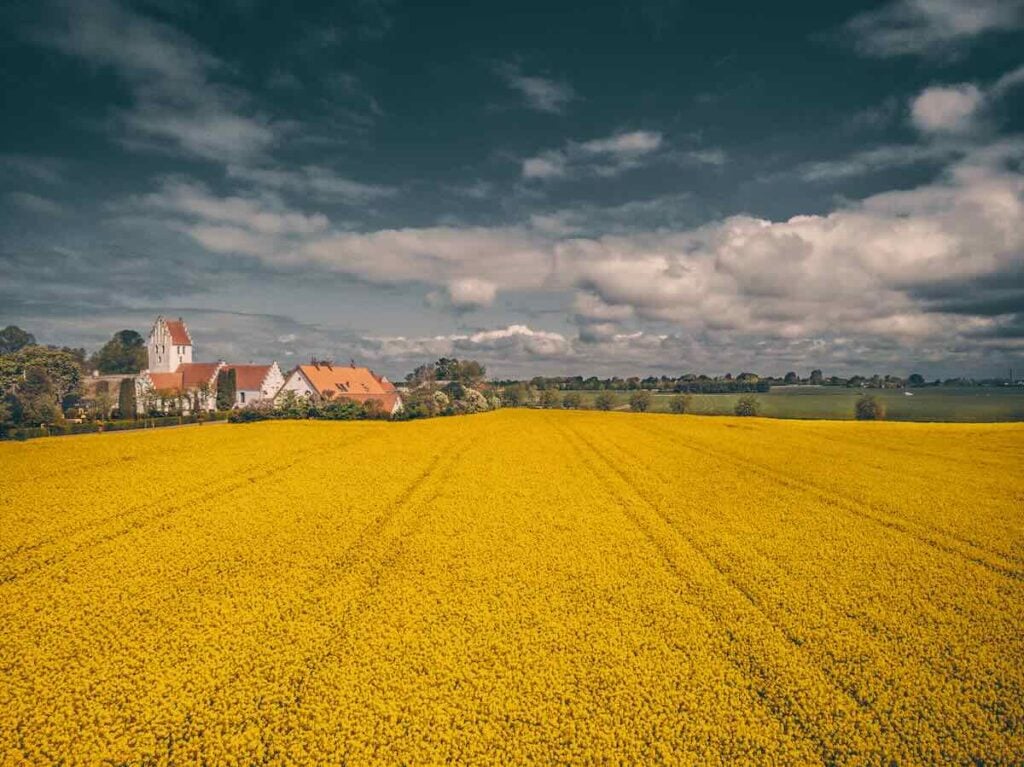
From the beautiful rolling hills and canola fields of the southern region of Skåne, to the deep forests and jaw-dropping Icehotel in the northern region of Norrland—Sweden offers a multitude of unique experiences.

It’s also known for consumer-brand exports such as IKEA, Volvo, and H&M, as well as tech innovations such as Spotify, Minecraft, The Pirate Bay, and Skype.
If you’re hungry for more in-depth information about Sweden, I’ve written plenty of articles that describe the country in more detail.
For an extensive list of more things Sweden is known for, go read my epic guide to Swedishness.
If you’re more curious about the Swedish people, I’ve written an article that describes how Swedes behave and what Swedish culture is like in general:
A Quick Travel Guide to Sweden
Language:
The official language is Swedish, but English is widely spoken and understood throughout the country, making it easy for tourists to communicate.
Currency:
The currency in Sweden is the Swedish Krona (SEK).
Capital:
Stockholm is the capital and largest city in Sweden, as well as the home of the Royal Palace. It is built on 14 islands connected by bridges and offers a charming blend of historical sites, modern architecture, and a vibrant cultural scene.
Climate:
Sweden has a temperate climate with mild summers and cold winters. Summers (June to August) are pleasant, while winter (December to February) can be quite cold, especially in the northern regions.
Best Time to Visit:
The best time to visit Sweden is during the summer months (June to August) when the weather is favorable, and outdoor activities are in full swing. However, winter is also a popular time to visit for those interested in experiencing a Nordic winter and the magical Northern Lights.
Notable Cities:
Aside from Stockholm, other notable cities to visit in Sweden include:
- Gothenburg: Known for its vibrant food scene, maritime heritage, and beautiful archipelago.
- Malmö: A modern and multicultural city with an impressive mix of old and new architecture (and my hometown!).
- Uppsala: Home to Sweden’s oldest university and a great Viking museum, Uppsala offers a rich cultural and historical experience.
Tourist Attractions:
- Gamla Stan: Explore Stockholm’s charming Old Town, with its narrow medieval streets, colorful buildings, and royal palace.
- Abisko National Park: Located in Swedish Lapland, it is the perfect spot to witness the mesmerizing Northern Lights.
- Gotland: Visit this stunning island with medieval architecture, sandy beaches, and idyllic countryside (I spent 2 years here and loved it!).
- Vasa Museum: Discover the well-preserved Vasa warship, which sank in Stockholm’s harbor in 1628 and was salvaged centuries later.
Food:
Swedish cuisine offers an array of delicious dishes, including iconic Swedish meatballs, sill (pickled herring), gravlax (cured salmon), and cinnamon/cardamon buns. Don’t forget to try traditional “delicacies” like surströmming (fermented herring) and smörgåstårta (“sandwich cake”).
Travel Tips:
- Sweden has an efficient public transportation system, including trains, buses, and ferries, making it convenient to explore the country.
- Cashless payments are widely accepted in Sweden, so carrying a credit card or relying on mobile payment apps is recommended.
- Swedes practice “allemansrätt,” which grants everyone the right to access and enjoy the natural landscapes. Respect nature and follow guidelines to preserve the environment.
🇳🇴 Norway

👑 Official name: Kongeriket Norge (Kingdom of Norway)
🆔 Meaning: “The Way North“
📍Location: Northern Europe
🏛 Capital: Oslo (pop: 1 019 513 in 2022)
💬 Languages: Norwegian, Sami
👫 Population: 5 553 840 citizens (Oct 2022)
❤️ Life expectancy: Men 81.1 years, Women 84.8 years (2022)
💰 GDP per capita: $89 203 USD (2021)
🗺 Total Area: 148 729 sq mi
⏳ Consolidated: 872, gained independence in 1905
ℹ️ Highest GDP per capita in the Nordic region, home of fjords, glaciers, and oil rigs
Norway is the smaller, prettier, and wealthier western neighbor of Sweden; filled with majestic mountain ranges, enchanting fjord landscapes, and rich historical landmarks.
It is not only the richest country in the Nordics (from a per capita perspective), but also one of the wealthiest countries in the world — not the least due to its massive oil and natural gas resources scattered around the Norwegian Sea.

The country’s fjords, mountains, and natural wonders will truly leave you speechless; I’ve spent countless hours hiking around places like Geirangerfjord and Hardangerfjord, simply amazed by the scenery.
And no, this is not a corny exaggeration, it is truly mind-bogglingly beautiful!

The country is known in sports circles for its hugely successful downhill and cross-country skiers, the mega-star footballer Erling Haaland, and of course the #1 chess player in the world – Magnus Carlsen.
The capital Oslo offers many architectural wonders, a historical old town, and kind and helpful people — and is great to explore on foot as well.

A Quick Travel Guide to Norway
Language:
The official language is Norwegian, but English is widely spoken and understood throughout the country, making it easy for tourists to communicate.
Currency:
The currency in Norway is the Norwegian Krone (NOK).
Climate:
Norway experiences moderate winters and cool summers in coastal areas, while the inland areas can have considerably colder winters and hotter summers.
Best Time to Visit:
Summer (June – August) is the most popular time to visit due to warmer temperatures. Winter (November to March) is perfect for winter sports and viewing the Northern Lights.
Notable Cities:
- Oslo: The capital city boasts of modern architecture, fascinating museums like the Viking Ship Museum and the Munch Museum, and vibrant nightlife.
- Bergen: Known for the Bryggen Hanseatic Wharf, the Fløibanen funicular, and its close proximity to the fjords.
- Tromsø: This city is great for viewing the Northern Lights and offers many winter activities.
Tourist Attractions:
- Fjords: Norway is famous for fjords, including the Geirangerfjord and Nærøyfjord, which are UNESCO World Heritage sites.
- Viking Museum: Gain insights into the Viking culture and history.
- The Northern Lights: Tromsø is one of the best places in the world to witness the stunning Aurora Borealis.
Food:
You must try traditional Norwegian dishes like Rakfisk (fermented trout), Klippfisk (dried and salted cod), and Lutefisk (stockfish). Also, don’t miss out on tasting Brunost, a unique sweet brown cheese.
Travel Tips:
- The public transportation in Norway is excellent. The trains, buses, and boats are well-connected, making it easier to explore.
- Remember to respect the local culture and environment. Norway takes sustainability and nature conservation seriously, and it is expected that tourists do the same.
Whether you’re a lover of history, nature, or culture, Norway offers countless experiences for every type of traveler. Enjoy your journey in this beautiful Nordic country!
🇩🇰 Denmark

👑 Official name: Kongeriget Danmark, Kingdom of Denmark
🆔 Meaning: “The Danish march“
📍Location: Northern Europe
🏛 Capital: Copenhagen (pop: 2 135 634 in 2022)
💬 Languages: Danish, Faroese, Greenlandic
👫 Population: 5 920 767 citizens (Oct 2022)
❤️ Life expectancy: Men 79.6 years, Women 83.4 years (2022)
💰 GDP per capita: $67 803 USD (2021)
🗺 Total Area: 16 580 sq mi
⏳ Consolidated: Late 8th century
ℹ️ The smallest Scandinavian country, home of Lego, Mads Mikkelsen, hygge, smørrebrød, and bikes
Denmark is known as the land of Lego, Smørrebrød (open-faced sandwiches), and Hygge (getting cozy), as well as being the most continental Nordic country in culture and location.

It consists of the Jutland Peninsula and several islands, including Zealand, where the capital city of Copenhagen is located, and is really a small country when considering the total area of the mainland. However, if you count the semi-autonomous countries of the Faroe Islands and Greenland (which are technically part of the Kingdom of Denmark), it’s suddenly quite vast.
Nonetheless, the capital Copenhagen is the largest city in the Nordics, and offers a superb mix of canals, harbors, boardwalks, pedestrian-only streets, royal palaces, and of course the free city Christiania.

A Quick Travel Guide to Denmark
Language:
The official language is Danish. However, most Danes also speak English, especially in tourist areas.
Currency:
The currency in Denmark is the Danish Krone (DKK).
Capital:
Copenhagen is the capital and largest city in Denmark. It offers a mix of historical sites, innovative architecture, and a thriving culinary and cultural scene.
Climate:
Denmark has a temperate maritime climate with mild summers and cool winters. The weather can be unpredictable, so it’s recommended to pack layers and be prepared for occasional rain.
Best Time to Visit:
The best time to visit Denmark is during the summer months (June to August) when the weather is pleasant, and outdoor activities and festivals are in full swing. However, spring and autumn can also be delightful with fewer crowds.
Notable Cities:
In addition to Copenhagen, other notable cities to visit in Denmark include:
- Aarhus: Denmark’s second-largest city known for its vibrant arts and culture scene, museums, and stunning architecture.
- Odense: The birthplace of Hans Christian Andersen, this city offers a glimpse into Denmark’s history and fairy tale charm.
- Helsingør: Home to Kronborg Castle, the setting of Shakespeare’s famous play “Hamlet.”
Tourist Attractions:
- Tivoli Gardens: Located in the heart of Copenhagen, it is one of the world’s oldest amusement parks and offers a mix of rides, beautiful gardens, live entertainment, and delicious food.
- Nyhavn: This picturesque waterfront area in Copenhagen is lined with colorful 17th-century townhouses, bars, and restaurants, offering a lively and charming atmosphere.
- The Little Mermaid: One of Copenhagen’s most famous landmarks, the statue of the Little Mermaid sitting on a rock has become an iconic symbol of the city.
- Legoland Billund: Perfect for families, Legoland is a popular theme park in Denmark, featuring an array of impressive LEGO sculptures, rides, shows, and activities.
Food:
Danish cuisine is known for its open-faced sandwiches, smørrebrød, which are topped with a variety of ingredients and usually combined with a shot of aquavit. Other traditional dishes include frikadeller (Danish meatballs), stegt flæsk med persillesovs (pan-fried pork with parsley sauce), and æbleskiver (a type of Danish pancake).
Travel Tips:
- Denmark has a well-developed public transportation system, including trains and buses, making it easy to explore the country.
- Renting a bicycle is a popular way to get around in Denmark, as the country is relatively flat with many dedicated cycling paths.
- Keep in mind that Denmark can be quite expensive, so budget accordingly. However, there are also plenty of free attractions and activities to enjoy.
🇫🇮 Finland
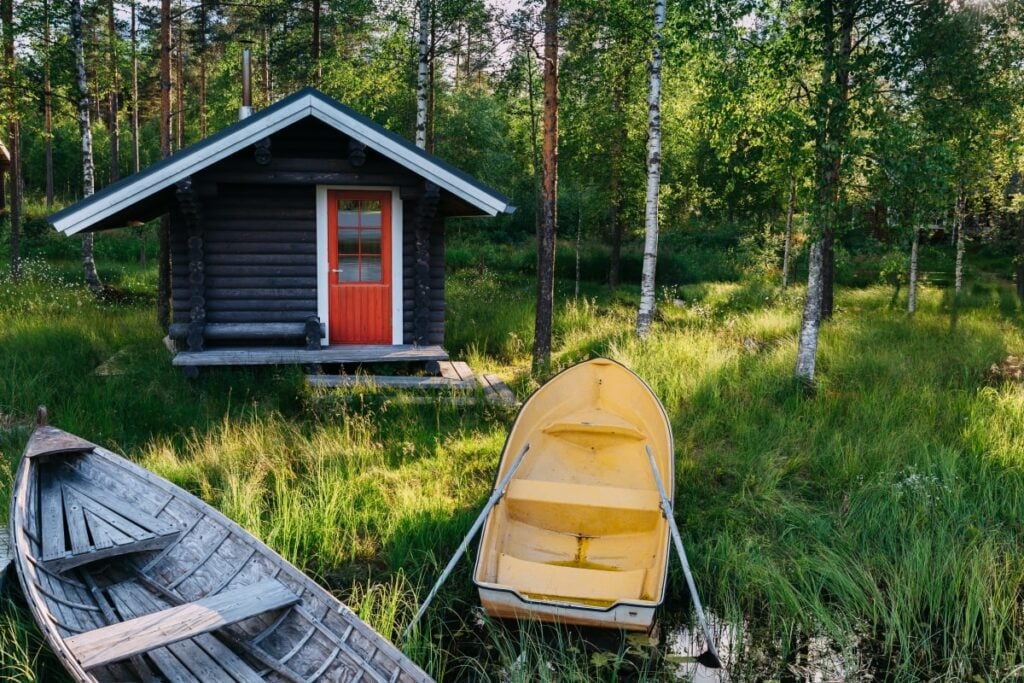
👑 Official name: Suomen tasavalta (Finnish), Republiken Finland (Swedish), Republic of Finland
🆔 Meaning: “The Land of the Finns“
📍Location: Northern Europe
🏛 Capital: Helsinki (pop: 2 135 634 in 2022)
💬 Languages: Finnish, Swedish, Sami
👫 Population: 5 569 431 citizens (Oct 2022)
❤️ Life expectancy: Men 79 years, women 84 years (2022)
💰 GDP per capita: $53 982 USD (2021)
🗺 Total Area: 130 678 sq mi
⏳ Consolidated: 1809, Independent from Russia 1917
ℹ️ The only Nordic country that doesn’t speak a language with Norse roots, home of the sauna, Moomin, Angry Birds, and Santa Claus
Finland is known as the “Land of a Thousand Lakes” and the home of Sauna, Moomin, Nokia, and of course the annoyingly succesful Angry Birds.
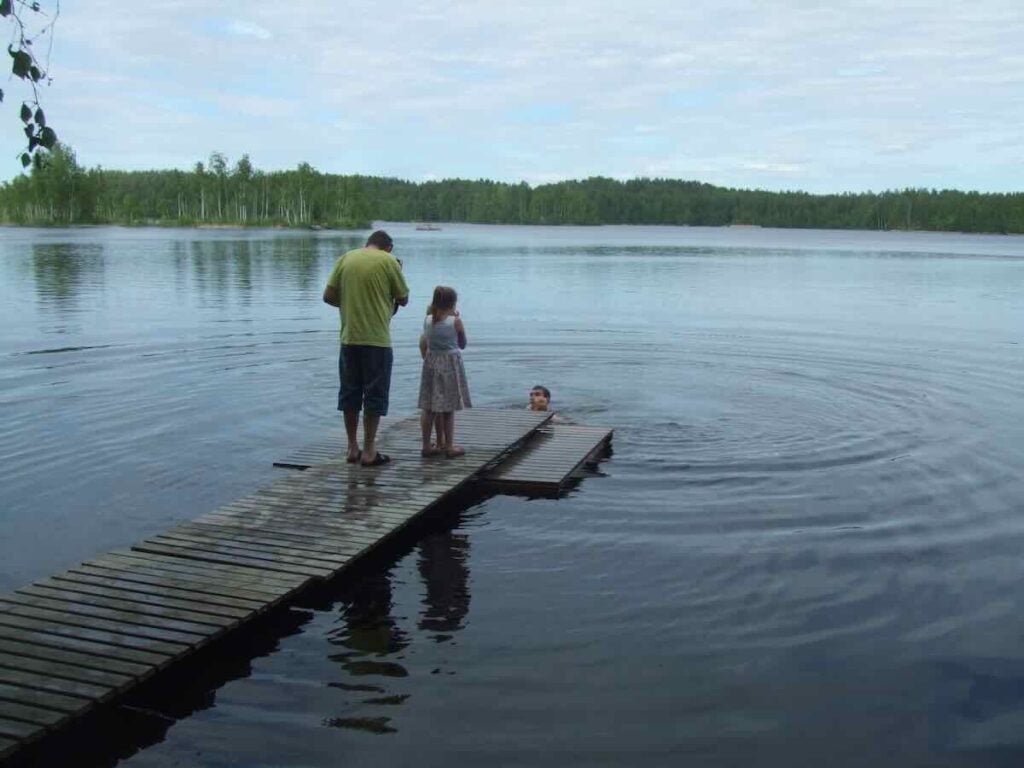
Being half-Finnish I’ve spent every other summer and winter break growing up visiting and enjoying the uniquely Finnish way of life with my Suomalainen family.
The Finnish language is the odd one out in the region, as the only language without any Old Norse roots, and for being extremely different from its neighbor’s languages.

That said, Finland was part of Sweden for close to 500 years before falling into Russian hands, and when it finally gained independence in 1917 it forged strong bonds with its western neighbor that are even stronger today.
A Quick Travel Guide to Finland
Language:
The official languages are Finnish and Swedish. English is widely spoken throughout the country, especially in tourist areas.
Currency:
The currency in Finland is the Euro (EUR).
Capital:
Helsinki is the capital and largest city in Finland. It is a vibrant cultural hub with a blend of modern and historical architecture.
Climate:
Finland experiences distinct seasonal changes. Summers are mild and pleasant, while winters can be cold with significant snowfall. The Arctic regions in the north have colder temperatures.
Best Time to Visit:
The best time to visit Finland depends on your interests. Summer (June to August) offers long daylight hours and pleasant weather, while winter (December to February) provides opportunities for winter sports and the chance to see the Northern Lights.
Notable Cities:
In addition to Helsinki, other notable cities to visit in Finland include:
- Rovaniemi: Located right on the Arctic Circle, it is known as the official home of Santa Claus and offers winter activities, including sleigh rides, reindeer safaris, and ice fishing.
- Turku: The former capital city of Finland, known for its historic landmarks, medieval castle, and vibrant riverfront.
- Tampere: Finland’s third-largest city, offering a mix of cultural attractions, museums, and scenic lake views.
Tourist Attractions:
- Northern Lights: Head to Finnish Lapland for a chance to witness the breathtaking Northern Lights dancing across the night sky.
- Santa Claus Village: Visit Rovaniemi and step into the magical world of Santa Claus, where you can meet Santa himself and cross the Arctic Circle.
- Archipelago National Park: Explore the stunning archipelago off the southwestern coast of Finland, consisting of thousands of islands and islets, perfect for boating, kayaking, and fishing.
- Suomenlinna Sea Fortress: Located just off the coast of Helsinki, this UNESCO World Heritage site offers a glimpse into Finland’s history with its well-preserved fortress and picturesque surroundings.
Food:
Finnish cuisine is influenced by its Nordic neighbors, emphasizing fresh and local ingredients. Try traditional dishes like salmiakki (salty licorice), lihapiirakka (a meat and rice-filled pastry), reindeer meat, Karjalan piirakka (rice-filled rye pastry), and kalakukko (fish and pork-filled pastry).
Travel Tips:
- Finland has an excellent public transport system, including trains and buses, making it easy to explore the country.
- Sauna culture is an integral part of Finnish life. Don’t miss the chance to experience a traditional Finnish sauna, which is an essential part of Finnish culture and relaxation.
- Remember to pack appropriate clothing based on the season you’ll be visiting, including warm layers and waterproof gear.
- Finland’s nature is pristine and preserved, so help maintain its beauty by respecting the environment and following guidelines for responsible tourism.
🇮🇸 Iceland

👑 Official name: Island, Iceland
🆔 Meaning: “The Land of Ice“
📍Location: North Atlantic Ocean
🏛 Capital: Reykjavík (pop: 131 136 in 2022)
💬 Languages: Icelandic
👫 Population: 376 248 citizens (Oct 2022)
❤️ Life expectancy: Men 82.2 years, women 84.9 years (2022)
💰 GDP per capita: $53 982 USD (2021)
🗺 Total Area: 39 682 sq mi
⏳ Consolidated: 930, Independent 1918
ℹ️ Closest to Old Norse out of all Nordic languages, home of volcanoes, phenomenal landscapes, geysers, and Björk
Iceland is a fairly remote island nation located in the North Atlantic Ocean, and is known for its spectacular volcanic landscape, relaxing hot springs, and vomit-inducing fermented shark specialty.

If you want to learn how the Vikings spoke, the Icelandic language is the closest to Old Norse out of all the North Germanic languages.
A Quick Travel Guide to Iceland
Language:
The official language is Icelandic. However, English is widely spoken and understood, especially in tourist areas.
Currency:
The currency in Iceland is the Icelandic Króna (ISK).
Capital:
Reykjavik is the capital and largest city in Iceland. It offers a lively arts and music scene, colorful buildings, and a great selection of restaurants and cafes.
Climate:
Iceland’s climate is influenced by the Gulf Stream, resulting in cool summers and mild winters. The weather can be quite unpredictable, so it’s advisable to pack layers and be prepared for changes.
Best Time to Visit:
The best time to visit Iceland depends on your interests. Summer (June to August) offers longer days, milder temperatures, and the opportunity to explore the stunning Icelandic landscapes. Winter (December to February) is ideal for witnessing the magical Northern Lights and engaging in winter activities.
Notable Attractions:
- Golden Circle: Experience three iconic natural wonders – Þingvellir National Park, the Geysir geothermal area, and Gullfoss waterfall – all in one route.
- Blue Lagoon: Relax and rejuvenate in the famous geothermal spa with its mineral-rich, milky blue waters.
- Vatnajökull National Park: Home to Europe’s largest glacier, where you can hike, explore ice caves, and witness captivating ice formations.
- Seljalandsfoss and Skógafoss Waterfalls: These stunning waterfalls offer unique experiences, with the chance to walk behind Seljalandsfoss and see the rainbow at Skógafoss.
- Jökulsárlón Glacial Lagoon: Marvel at the floating icebergs in this picturesque glacial lagoon, where you can also take boat tours.
Food:
Don’t miss the opportunity to try traditional Icelandic cuisine, such as fresh seafood (including delicious Icelandic salmon and cod), Icelandic lamb, and their unique delicacy, fermented shark. Skyr, a traditional Icelandic yogurt, is also a must-try.
Travel Tips:
- Iceland’s Ring Road (Route 1) allows you to drive around the entire country, exploring its scenic landscapes. Renting a car is recommended for flexibility and convenience.
- Be aware of the unpredictable weather and carry appropriate clothing, including waterproof and warm layers.
- Iceland is known for its geothermal energy, which powers most of the buildings and hot water supply. Be mindful of conserving energy and being eco-friendly.
- Respecting nature is crucial in Iceland. Follow designated paths, avoid littering, and leave no trace of your visit.
🇫🇴 Faroe Islands

👑 Official name: Føroyar (Faroese), Færøerne (Danish), Faroe Islands
🆔 Meaning: “The Sheep Islands“
📍Location: North Atlantic Ocean
🏛 Capital: Tórshavn (pop: 21 078 in 2022)
💬 Languages: Faroese, Danish
👫 Population: 54 000 citizens (Oct 2022)
❤️ Life expectancy: Men 79.9 years, women 84.5 years (2022)
💰 GDP per capita: $66 321 USD (2021)
🗺 Total Area: 540 sq mi
⏳ Consolidated: 1030
ℹ️ Part of the Danish Kingdom, home of the puffin, breathtaking cliffs, sheep, and cozy grass roofs
The Faroe Islands are home to puffins, cozy grass-roofed houses, and gorgeous coastal landscapes.
When we spent time on these islands a few years back we were taken aback by how spectacular the landscapes were, how untouched the islands felt, and how warmly the locals welcomed us.
And due to its location in the North Atlantic Ocean, the climate is volatile and harsh and never gets truly cold or warm.

A Quick Travel Guide to the Faroe Islands
Language:
The official language is Faroese. However, Danish is also widely spoken and understood by most Faroese people.
Currency:
The currency in the Faroe Islands is the Faroese króna, which is a local version of the Danish krone (DKK).
Capital:
Tórshavn is the capital and largest city in the Faroe Islands. It is known for its colorful houses, charming harbor, and lively cultural scene.
Climate:
The Faroe Islands have a maritime subpolar oceanic climate with cool summers and mild winters. The weather is highly changeable, so it’s advisable to pack layers and waterproof clothing. To illustrate this, during a May visit some years ago we experienced hail, snow, rain, and nice and sunny weather — all in the same afternoon.
Best Time to Visit:
The best time to visit the Faroe Islands is during the summer months (June to August) when the weather is milder, and the days are longer. However, the islands have their own unique charm in all seasons.
Notable Attractions:
- Sørvágsvatn (Leitisvatn): A stunning lake located on Vágar Island, famous for its optical illusion that makes it appear as if the lake is hovering above the ocean.
- Mykines: This remote island is a bird lover’s paradise, inhabited by puffins, razorbills, and other seabirds. It is also home to a picturesque lighthouse and breathtaking cliffs.
- Gásadalur: A village situated amidst striking landscapes with a picturesque waterfall, Múlafossur, and stunning coastal views. It was once one of the most isolated villages in the Faroe Islands.
- Skansin: A historic fort located in Tórshavn offering panoramic views of the city and the harbor.
- Kirkjubøur: A historic village with well-preserved medieval ruins, including the ruins of an ancient cathedral and the oldest still-inhabited wooden house in the world, Kirkjubøargarður.
Food:
Try the traditional Faroese cuisine, including dishes like ræst kjøt (smoked and fermented lamb), skerpikjøt (dried mutton), and Faroese fish delicacies like salted or dried fish. Faroese cuisine is often centered around locally sourced and sustainable ingredients.
Travel Tips:
- Public transportation in the Faroe Islands is limited, so renting a car is recommended to explore the islands at your own pace.
- Make sure to plan out your meals, as there are not that many restaurants and stores around. And if you do find one, chances are it’s closed (speaking from experience here!).
- Be prepared for unpredictable weather and changes in road conditions. Always check the weather forecast and road conditions before venturing out.
- Respect the local nature and wildlife by following designated paths and trails, and avoid disturbing bird colonies. The islands have a strong conservation focus, and it’s essential to do your part in preserving their natural beauty.
- Keep in mind that the Faroe Islands are a remote destination, and some facilities may have limited opening hours, especially in more rural areas.
🇬🇱 Greenland
👑 Official name: Kalaallit Nunaat (Greenlandic), Grønland (Danish), Greenland
🆔 Meaning: “The Green Land“
📍Location: North Atlantic Ocean
🏛 Capital: Nuuk (pop: 19 023 in 2022)
💬 Languages: Greenlandic, Danish
👫 Population: 56 466 citizens (Oct 2022)
❤️ Life expectancy: Men 68.3 years, women 73.7 years (2022)
💰 GDP per capita: $54 570 USD (2021)
🗺 Total Area: 836 330 sq mi
⏳ Consolidated: 1262, Self rule 2009
ℹ️ Part of the Danish Kingdom, home of glaciers, tundra, and polar bears
Greenland, an autonomous territory within the Kingdom of Denmark, is the world’s largest island.
Known for its unique Arctic landscapes, massive glaciers, and rich Inuit culture, Greenland offers adventurers an unparalleled experience.

It is also known as being the site of a peculiar diplomatic exchange between Denmark and Canada, where the countries take turns claiming an island located in between the two while leaving a bottle of booze as a gift for the next expedition every time.
A Quick Travel Guide to Greenland
Language:
The official languages are Greenlandic and Danish. English is also widely spoken and understood, particularly in tourist areas.
Currency:
The currency in Greenland is the Danish Krone (DKK).
Capital:
Nuuk is the capital and largest city in Greenland. It serves as the administrative, cultural, and economic hub of the island.
Climate:
Greenland has an Arctic climate, characterized by long, cold winters and cool, short summers. Temperatures vary across different regions, with coastal areas being milder than the inland regions.
Best Time to Visit:
The summer months from June to August offer the most comfortable temperatures and extended daylight hours, making it the best time to explore Greenland’s unique landscapes.
Notable Attractions:
- Ilulissat Icefjord: Located on the west coast, it is a UNESCO World Heritage site known for its immense icebergs, calving glaciers, and breathtaking scenery.
- Eastern Settlement: Visit this historic site, the remains of the first Norse settlements in Greenland, dating back to the 10th century.
- Disko Island: Explore this picturesque island with its stunning volcanic landscapes, hot springs, and vibrant wildlife, including whales and seals.
- Greenland National Park: Covering a vast area of Northeast Greenland, it is the largest national park in the world. Experience raw nature, glaciers, and wildlife, including polar bears and musk oxen.
Food:
Traditional Greenlandic cuisine includes various seafood like fish, shrimp, and whale meat. Other specialties include mattak (whale skin and blubber) and kiviak (fermented seabird).
Travel Tips:
- Greenland is best explored through organized tours, as the terrain and weather conditions can be challenging.
- Pack warm and waterproof clothing, as the weather in Greenland can be unpredictable, even in summer.
- Respect the local culture and nature by following guidelines and instructions given by tour guides and authorities.
- Observe wildlife from a safe distance and avoid disturbing their natural behavior or habitats.
🇦🇽 Åland Islands

👑 Official name: Ahvenanmaa (Finnish), Åland (Swedish), Åland
🆔 Meaning: “Land of Water“
📍Location: Baltic Sea, Northern Europe
🏛 Capital: Mariehamn (pop: 19 023 in 2022)
💬 Languages: Swedish
👫 Population: 30 129 citizens (Oct 2022)
❤️ Life expectancy: Men 80.4 years, women 85.5 years (2022)
💰 GDP per capita: $51 934 USD (2022)
🗺 Total Area: 610 sq mi
⏳ Consolidated: 1920, Self rule
ℹ️ Autonomous region of Finland, but culturally and ethnically Swedish. The least populous Nordic country, and home of the Åland Archipelago
The Åland Islands is an autonomous region of Finland located in the Baltic Sea in between Sweden and Finland. Comprising of more than 6,500 islands, this archipelago offers a unique blend of Scandinavian and Finnish culture, stunning nature, and maritime heritage.
What makes this island region unique is that it’s a culturally Swedish region within Finland, that speaks Swedish and follows Swedish traditions more so than Finnish.
This has been the case since the age of Vikings, when it was an important trading port on the way east towards Kievan Rus and even Miklagård (Istanbul).
It was given to Finland by the UN after the first world war, and is commonly used as a textbook example of how to solve a territorial island dispute amicably.
And while most Ålanders see themselves more as Swedes than Finns, the country still enjoys a high degree of autonomy as a part of Finland (which might not have been the case if they were part of Sweden).
A Quick Travel Guide to Åland
Language:
The official languages are Swedish and Finnish. However, Swedish is the predominant language spoken on the islands.
Currency:
The currency used in the Åland Islands is the Euro (EUR).
Capital:
Mariehamn is the capital and largest town in the Åland Islands, known for its picturesque waterfront, maritime history, and charming architecture.
Climate:
The Åland Islands experience a mild maritime climate, with cool summers and relatively mild winters due to the moderating effects of the Baltic Sea. Summer is the most popular time to visit, with pleasant temperatures and long daylight hours.
Best Time to Visit:
The best time to visit the Åland Islands is during the summer months (June to August) when the weather is at its warmest and daylight hours are long. This is an ideal time for outdoor activities and exploring the archipelago.
Notable Attractions:
- Maritime Museum, Mariehamn: Discover the rich maritime history of the Åland Islands in this museum, showcasing fascinating exhibits and ship models.
- Kastelholm Castle: Explore this medieval castle located on the main island, offering a glimpse into the region’s history and providing stunning views from its tower.
- Archipelago Trail: Drive, bike, or hike along the scenic Archipelago Trail, a 250-kilometer route that winds through Åland’s picturesque landscapes and charming coastal villages.
- Långnäs Village: This small village is a popular starting point for exploring the eastern islands, with beautiful nature, picturesque cottages, and opportunities for fishing and boating.
Food:
The local flavors of Åland revolve around fresh seafood such as Baltic herring, salmon, and smoked fish. Don’t miss the opportunity to try Åland pancakes, a traditional dessert served with cloudberries and whipped cream.
Travel Tips:
- The Åland Islands are accessible by ferry or by air. Ferries operate from mainland Finland and Sweden.
- Renting a bike or a car is a great way to explore the islands at your own pace. It allows you to visit remote areas and experience the natural beauty of the archipelago.
- Keep in mind that the Åland Islands have their own autonomous status within Finland, and they maintain their own rules for governance and taxation.
- Respect the pristine nature of the islands by following hiking and camping guidelines, and dispose of waste responsibly.
The Nordic Flags (with the so-called “Nordic Crosses”)

Almost all the Nordic flags have the iconic “Nordic Cross”—a rotated Christian cross to symbolize the region’s late conversion from the Norse gods of the Viking Age to Christianity in the 11th century—with the exception being Greenland.
A red Nordic cross on a yellow background was also used as the union flag during the Scandinavian Kalmar union between 1397 and 1523, when most of the Nordics were united under one ruler, and one flag.
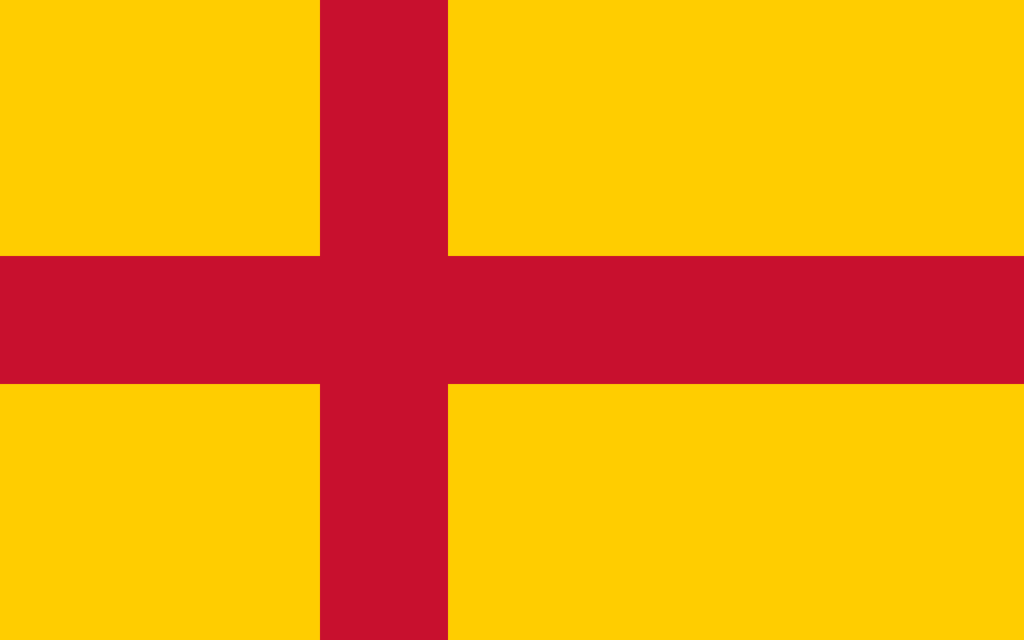
Greenland has ultimately opted for a different type of flag, as although the country has been under Scandinavian influence for most of the time since Erik the Red established the first Norse colony in Greenland in 986, the now mostly Inuit population is moving for independence from the Danish Kingdom it’s still formally a part of.
And speaking of Denmark, the Danish flag (“Dannebrog”) is claimed to be the oldest continuously used flag in the world according to the Guinness World Records!

So we’ve covered the countries located up in the cold north, but how about the people? Let’s look at who the Scandinavians are next.
The Scandinavian People

The people currently living in Scandinavia may seem like a stereotypically homogenous bunch today (the famously blond and blue-eyed Scandinavians), but in reality, we have arrived to the region from a number of different places.
The first people who settled in the Scandinavian region arrived some 14 000 years ago after the most recent ice age, one wave from the northeast (the modern day Russian steppes), and one from the south (Central Europe).
Both of these groups of people were hunter-gatherers who mainly followed the herds of animals that entered the region as the ice retreated, and it would take another 8 000 years until this way of life changed when farmers from Anatolia and Syria arrive in the region.

After a few millennia of farming and intermingling between the old and new arrivals, there would come a new wave of people to Scandinavia around 4 800 years ago from the steppes north of the Black Sea and the so-called Yamnaya culture.
After these three major influxes of people into the region, a common culture started taking form in Scandinavia, which would eventually become the Germanic and later Norse culture of the Iron and Viking Ages (around 400-1100 CE).
Over the past 1 300 or so years we Scandinavians haven’t changed all that much—studies have shown that we share around 65%-80% similar DNA to Scandinavians from the Viking Age—though we have seen more people continuously migrate to the region.
This is especially true over the last 40 years, as hundreds of thousands of immigrants have arrived from the Balkans, the Middle East, and the horn of Africa mainly.
So what do Scandinavians look like today? I’ll list some examples below of people you might have heard of who come from the region, but if you’d like to dig deeper I’ve also written an extensive article that goes into great detail about Nordic physical traits.
Famous Scandinavian Women
To get a better idea of what Scandinavian women look like and to get better acquainted with some of the more famous ones, I’ve included a small selection of the many inspiring women from the cold north below:










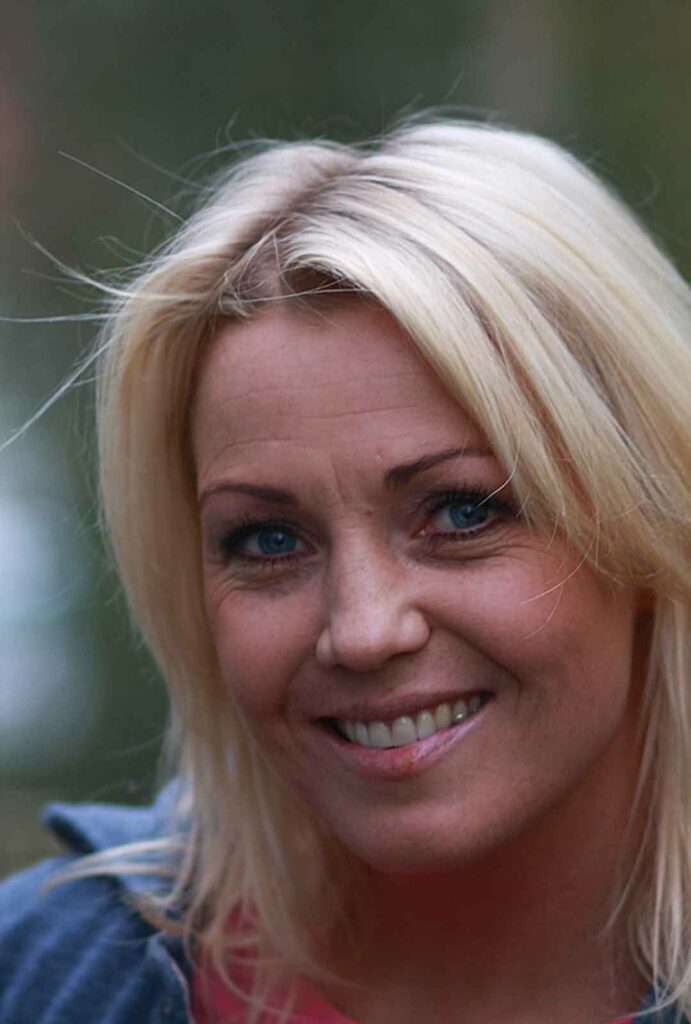
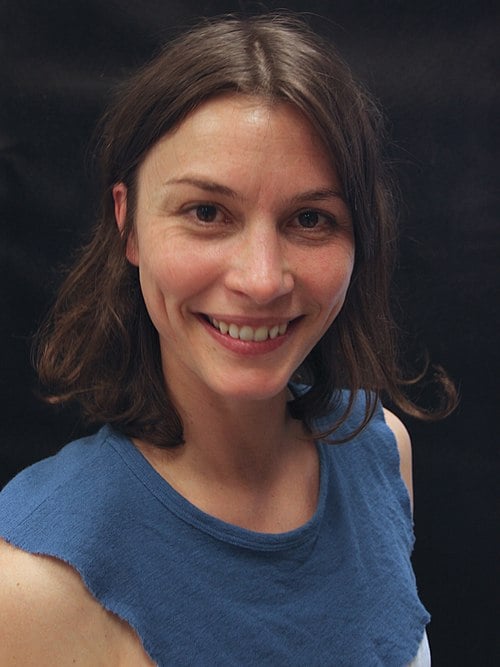




Famous Scandinavian men
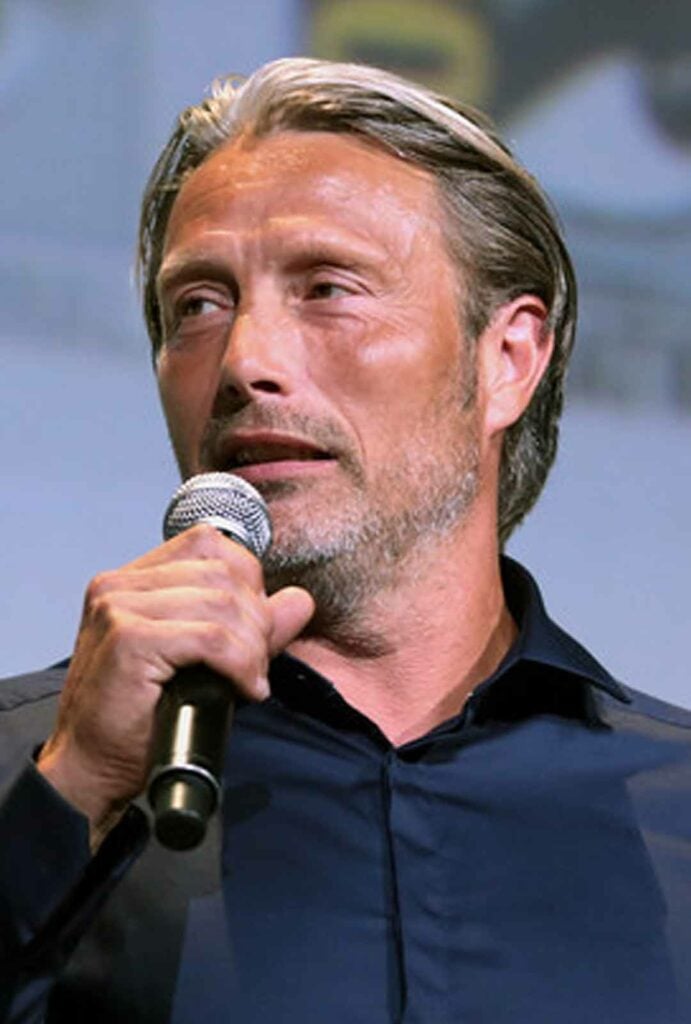











Ordinary Scandinavians
You might think to yourself, “Alright all the celebrities are gorgeous, big surprise! How about regular folks?”
It’s no surprise that actors and artists are on average more attractive, and I don’t want to promote a skewed notion that all Scandinavians are perfect (trust me, we are NOT!).
So let’s include some more everyday examples of “ordinary” folks from the region as well, mostly from photos I’ve taken myself in Malmö, Sweden, Copenhagen, Denmark, and Oslo, Norway, over the years:








The Scandinavian Languages
🇸🇪 Swedish
Swedish is an East Nordic language spoken by around 10 million people, making it the most common Scandinavian language. It is the main language of Sweden, and also a minority language in Finland where they still have some Swedish-speaking parts along the coast and the border to Northern Sweden.
The autonomous island region of Åland is also Swedish-speaking, situated in between Sweden and Finland (and officially part of Finland).
🇩🇰 Danish
Danish is an East Nordic language spoken by around 6 million people. It is the main language of Denmark, and is also spoken by many in the Faroe Islands and Greenland (both self-governing countries within the Kingdom of Denmark).
🇳🇴 Norwegian
Norwegian is a West Nordic language spoken by around 4.5 million people, which also makes it the smallest Scandinavian language. It is the main language of Norway.
ℹ️ If you’re interested in the Scandinavian languages and how they compare, I’ve written an article where I dive deeper into how Swedish, Danish and Norwegian sound, which is easier to learn, and how useful each language can be.
Nordic History: Vikings, Norse Mythology, Nordic Unity
The strong Nordic connection comes from a mostly common history; we share the same origin story and can trace our common ancestors back to the first inhabitants of the region (of course mixed with wave after wave of immigrants over the years).
Though we have changed a lot over time and had our fair share of conflicts and disagreements, the Nordic people have essentially shared a similar culture and values from the Bronze Age up until today.
That’s a 14 000-year-old connection; no wonder we are hard to tell apart sometimes!
Historians generally agree that the Nordic Bronze Age culture was the cradle of all the Germanic tribes that would spread out across Europe, and contribute to the fall of the Roman Empire. And out of the Northern Germanic tribes came the Norse Vikings, who would yet again set out on raids and colonize large parts of Europe a few hundred years later.
Further Reading on the Norse Vikings
Further Readings on Norse Mythology
Scandinavian & Nordic Unity
Although the three Scandinavian countries do share a common origin, history, language group, and culture—and even agree on most modern-day politics—the Scandinavian region is not unified by a common governing body (such as the EU or the US, for example).
The countries each have their own separate governments, and despite being part of the same Scandinavian language group, the three languages aren’t really mutually intelligible (although especially Swedish is widely understood among young Danes and Norwegians).
That said, within the larger Nordic region (which formally includes Sweden, Denmark, Norway, Finland, Iceland, the Faroe Islands, Greenland, and Åland) there is a regional co-operation agreement in effect through the Nordic Council (formed in 1952).
The Nordic Council of Ministers is made up of 87 elected representatives from all the countries in the council, and was formed to foster cooperation between the Nordic countries and “to make the Nordic region one that people want to live and work in”.
Common Questions
Is Finland Considered Part of Scandinavia?
Formally and locally speaking, Finland is generally not considered part of the Scandinavian region or the Scandinavian people (Sweden, Denmark, and Norway). However, the broader Scandinavian definition commonly used in the US sometimes includes Finland, Iceland, Åland, and the Faroe Islands when referring to Scandinavia and Scandinavians.
A small part of northern Finland is also technically part of the Scandinavian peninsula, bordering both Norway and Sweden above the arctic circle.

It’s also important to note that Finland has been part of both Sweden and through it the Scandinavian Kalmar union (for a combined 500 years), so the Scandinavian ties are still strong to Finland, although sometimes with a bad connotation from the Finnish perspective.
When including Finland with the Scandinavian countries the terms Fenno-Scandinavia or Fennoscandia are sometimes used.

ℹ️ I wrote an article diving deeper into whether Finland is Scandinavian or not, so if you want to find out more about Finland’s links to Scandinavia go check that out.
So why aren’t the Finns seen as Scandinavian?
The short answer is that the Finns do not share the same origin story that Scandinavians do, but instead have their own unique story of how they came to the Nordic region, and a separate cultural heritage from the Scandinavian.
I have written an article about Finnish heritage and the origin of the Finns, so go and check that out if you’d like to find out more about the fascinating Finnish history.
Source:
https://www3.weforum.org/docs/WEF_GGGR_2022.pdf
https://www.usnews.com/news/best-countries/rankings/quality-of-life
https://www.norden.org/en/information/official-nordic-co-operation
https://www.google.com/books/edition/_/n1TUAAAAMAAJ?hl=en&gbpv=0
https://sok.riksarkivet.se/sbl/Presentation.aspx?id=15413
https://www.kungahuset.se/kungafamiljen
https://www.ssb.no/befolkning/folketall/statistikk/befolkning
 Norse vs. Norwegian vs. Nordic: Differences Explained
Norse vs. Norwegian vs. Nordic: Differences Explained Is Scandinavia a Country? The Scandinavian Connection Explained
Is Scandinavia a Country? The Scandinavian Connection Explained How Nordic People Understand & Talk To Each Other (+ Graphs)
How Nordic People Understand & Talk To Each Other (+ Graphs) Is Finland Scandinavian? (The Full Answer)
Is Finland Scandinavian? (The Full Answer)
















An interesting find and one with lots of things to learn. These are places and people I tend to daydream about during the Arizona summers. Cool, damp and green are in short supply around here so I am glad to have found a place where I can at least see pictures of it. Thanks.
I’m glad you enjoyed the article Steven! Having spent some time in the southwest deserts myself, I can certainly relate and confirm the stark contrast between the two worlds. But there are certainly some magnificent landscapes around your neck of the woods too!
If you’re interested, I send updates every now and then with photos and stories from the Nordics through my newsletter. I love taking photos of life here in the Nordics, so it’s certainly a big part of the newsletter! You can sign up here: https://shop.nordicperspective.com/get-a-free-guide-to-the-nordics
Thanks for reading,
–Karl
What a fantastic info site for the Scandinavian/Nordic history and total explanation of the terms and people. I am a USA born citizen with Herman heritage but always interested in countries of the world. Keep writing!